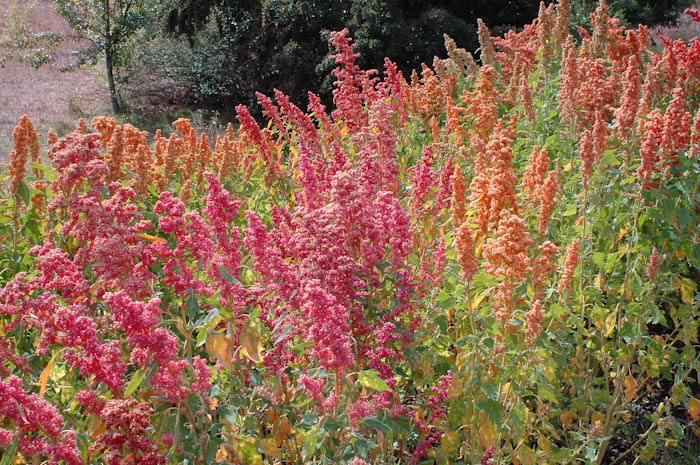Field experiment was conducted to determine the effects of tillage systems and fertilization on growth, yield and quality of quinoa crop (Chenopodium quinoa Willd.). The experiment was laid out in a split-plot design with four replicates, two main plots [conventional tillage (CT) and minimum tillage (MT)] and three sub-plots (fertilization treatments: control, cow manure and compost). The soil porosity (45.5-49.75%) and total nitrogen (0.144-0.173%) were higher in soils subjected to MT system than under CT. In soil porosity, an interaction between fertilization and tillage system was found. The highest leaf area index (4.47-5.03), dry weight (8650-9290 kg ha-1) and root density (1.03-1.21 cm cm-3) were also found in MT. Moreover, there were significant differences between the organic fertilization treatments concerning the LAI, dry weight and root density. The highest seed yield (2485-2643 kg ha-1) and saponin content (0.42-0.45%) were found in cow manure and compost treatments. Also, the highest saponin yield (7.70-12.05 kg ha-1) was found in the MT system. Saponin yield had positive and significant correlation with total N (r=0.866). In quinoa measurements, an interaction between fertilization and tillage system was not found. The present results indicated that MT and organic fertilization increase saponin yield of quinoa.
Full text here

